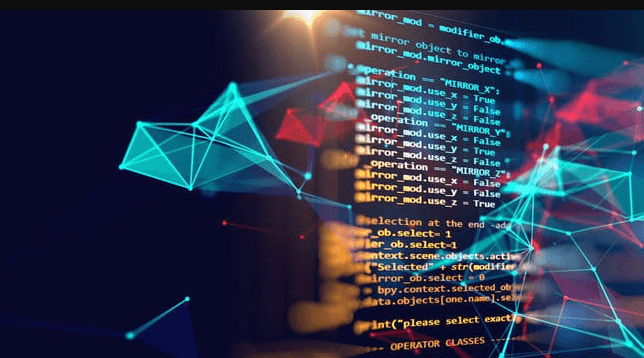The address content://cz.mobilesoft.appblock.fileprovider/cache/blank.html might look technical, but it plays an important role in how Android handles internal files. This content URI belongs to the AppBlock application developed by MobileSoft, and it helps manage a blank.html file inside the app’s cache directory through FileProvider.
This unique content url isn’t a website or a regular link; it’s a secure Android path used by the system to safely access and share files between apps. However, users often get puzzled when they see errors related to this URI or experience blank-screen issues.
In this article, we’ll explain what this URI really means, why it shows up, common issues developers face, and several tested solutions. By the end, you’ll understand the structure of content://cz.mobilesoft.appblock.fileprovider/cache/blank.html, know how to fix its errors, and follow best practices for content URI security.
Understanding Content Url (content://cz.mobilesoft.appblock.fileprovider/cache/blank.html)
Every content URI in Android follows a standard format: content://authority/path/id. In our case, the authority is cz.mobilesoft.appblock.fileprovider, the path is cache, and the id or resource is blank.html. Together, they define where the system can find a resource inside the app, without exposing the actual file path.

Unlike file:/// links, content:// URIs are used by the Android ContentProvider or FileProvider systems. They let one app securely give another app temporary access to its data. That’s why they are central to modern Android app development — they respect privacy and system integrity.
For AppBlock, this particular URI points to a temporary blank HTML file used when the app blocks distracting sites or content. Instead of showing an error or crashing, the app redirects the browser or WebView to load this blank.html, keeping the experience clean and stable.
Common Troubleshooting Problems
Even though the content://cz.mobilesoft.appblock.fileprovider/cache/blank.html URI is normal, it sometimes leads to confusion.
The first issue is a FileNotFoundException when developers or apps try to open the file using direct file operations instead of ContentResolver. Android doesn’t allow normal file access for content URIs, which leads to failed attempts.
Another common cause is a WebView blank-screen issue. Some WebView configurations block local content for security reasons, or a Content Security Policy (CSP) prevents scripts or assets from loading, leaving only a white screen.
Lastly, problems can occur if the cache directory is cleared, corrupted, or missing the blank.html file. The URI may exist in code, but the file itself no longer does — resulting in failed loads or redirect loops.
Solutions to Fix the Error content://cz.mobilesoft.appblock.fileprovider/cache/blank.html
Here are three reliable, field-tested solutions to help you fix or prevent errors linked to this URI.
Solution 1: Use ContentResolver Instead of File Paths
Accessing a content URI requires the proper API. Instead of treating the URI as a file path, always use ContentResolver to open a stream safely:
Uri uri = Uri.parse(“content://cz.mobilesoft.appblock.fileprovider/cache/blank.html”);
try (InputStream stream = getContentResolver().openInputStream(uri)) {
if (stream != null) {
BufferedReader reader = new BufferedReader(new InputStreamReader(stream));
StringBuilder htmlBuilder = new StringBuilder();
String line;
while ((line = reader.readLine()) != null) {
htmlBuilder.append(line);
}
String html = htmlBuilder.toString();
}
} catch (IOException e) {
e.printStackTrace();
}
This ensures Android handles the URI through its secure FileProvider framework. If access fails, double-check authority names, manifest configuration, and path mapping in paths.xml.
Solution 2: Handle the URI Properly in WebView
If your WebView is showing a blank screen, the problem may be how it loads the content:// scheme. To fix this, intercept such URIs and manually feed their contents to WebView:
webView.setWebViewClient(new WebViewClient() {
@Override
public boolean shouldOverrideUrlLoading(WebView view, WebResourceRequest request) {
Uri uri = request.getUrl();
if (“content”.equals(uri.getScheme()) &&
uri.getAuthority().equals(“cz.mobilesoft.appblock.fileprovider”)) {
try {
InputStream input = getContentResolver().openInputStream(uri);
if (input != null) {
BufferedReader br = new BufferedReader(new InputStreamReader(input));
StringBuilder sb = new StringBuilder();
String l;
while ((l = br.readLine()) != null) {
sb.append(l);
}
view.loadDataWithBaseURL(null, sb.toString(), “text/html”, “utf-8”, null);
return true;
}
} catch (IOException e) {
e.printStackTrace();
}
}
return super.shouldOverrideUrlLoading(view, request);
}
});
This approach allows you to control rendering, avoid blank outputs, and keep the AppBlock URI behavior stable.
Solution 3: Clear Cache and Regenerate Blank.html
Sometimes, the issue has nothing to do with code — it’s just a missing or corrupted cache file. You can fix this by:
- Opening Settings → Apps → AppBlock → Storage & Cache → Clear Cache.
- Reinstalling the AppBlock app to regenerate blank.html and restore a valid cache structure.
- Ensuring the app has storage permission and isn’t restricted by battery optimizations or VPNs.
- Restarting your phone to release file locks.
These steps resolve most cache-based errors involving content://cz.mobilesoft.appblock.fileprovider/cache/blank.html within minutes.
Best Practices and Security Considerations
When working with FileProvider, follow Android security guidelines. Always set android:exported=”false” unless you intentionally need cross-app sharing. Use <grant-uri-permission> for temporary access, and avoid granting global permissions.
Never store private data inside public cache paths. Cache files are temporary and can be deleted at any time by the system. If your app depends on persistent data, move it to internal storage or a database instead.
Finally, test across Android versions, handle denied permissions gracefully, and ensure your app degrades safely if a content URI is unavailable or malformed. This ensures stability, privacy, and a better user experience.
Mastering Content URIs for Android Development
Developers who truly master content URIs gain a significant advantage. They understand that these URIs abstract away direct file access, allowing modular, safe, and flexible app design.
When defining your own FileProvider, always document the authority, path, and URI pattern. This makes debugging easier and prevents other developers from breaking access unintentionally.
Remember: avoid converting content URIs into file paths. Always use ContentResolver, openInputStream(), or the MediaStore API. These methods are stable, forward-compatible, and recommended by Google.
By learning the internal structure — scheme, authority, path, and id — you can troubleshoot issues quickly and design apps that scale and stay secure.
Conclusion
The mysterious content://cz.mobilesoft.appblock.fileprovider/cache/blank.html isn’t an error, virus, or suspicious link — it’s a system-generated content URI that helps AppBlock manage blocking pages safely.
Most issues arise from cache corruption, manifest misconfiguration, or WebView restrictions. Once you apply the right solution — whether fixing the FileProvider, clearing the cache, or using proper ContentResolver APIs — the problem disappears.
Understanding how Android uses content URIs not only helps you fix this issue but also strengthens your overall development skills. The more you master URI handling, permissions, and security boundaries, the smoother your apps will perform.
Frequently Asked Questions
Q1. What is content://cz.mobilesoft.appblock.fileprovider/cache/blank.html?
It’s a content URI pointing to a blank.html file stored in the AppBlock app’s cache, managed through FileProvider for security and redirection.
Q2. Why does my screen go blank when this URI loads?
The WebView may block content:// schemes or the FileProvider setup may be incomplete. Adjust permissions or manually handle loading as shown above.
Q3. Is this URI dangerous or related to malware?
No, it’s harmless. It’s part of how the AppBlock app blocks websites or displays placeholder pages safely.
Q4. How can developers access the blank.html content properly?
Always use ContentResolver.openInputStream() to open and read the data instead of file-path access.
Q5. Why do I get FileNotFoundException?
The blank.html file may not exist in cache, or the FileProvider authority or path in your manifest doesn’t match what the app expects.
Q6. Does clearing cache remove blank.html?
Yes, since it’s stored in the cache folder, it can be deleted automatically or manually. The app usually recreates it when needed.
Q7. How can I ensure FileProvider security?
Use android:exported=”false”, specify narrow <paths>, and control which URIs other apps can read with <grant-uri-permission>.
Q8. Is content:// used only in AppBlock?
No — content:// URIs are universal in Android. They’re used by system apps like Contacts, MediaStore, and Documents for secure data sharing.
